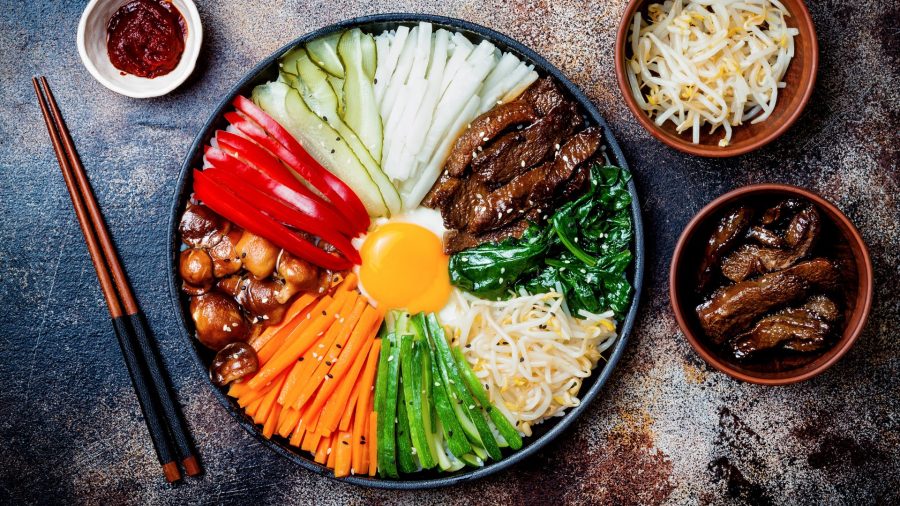Introduction to Korean Cuisine
Korean cuisine has taken the world by storm, captivating taste buds and hearts alike. With its bold flavors, vibrant colors, and an endless array of dishes to explore, it’s no wonder that Korean food has become a global sensation. From sizzling barbecued meats to comforting bowls of kimchi jjigae, each bite tells its own story.
What makes this cuisine so uniquely addictive? It’s more than just heat; it’s a symphony of savory notes that dance on your palate. As we dive into the secrets behind the allure of Korean food, prepare yourself for a flavorful journey filled with spices and textures that will inspire you to bring these tantalizing elements into your own kitchen. Let’s uncover what lies beneath those layers of flavor!
The Key Ingredients That Make Korean Food So Addictive
Korean food captivates the senses with its vibrant flavors and textures. Central to this allure are a few key ingredients that pack a punch.
Gochujang, a fermented red chili paste, brings both heat and depth. It adds an unmistakable sweetness that harmonizes beautifully with savory elements.
Then there’s doenjang, Korean soybean paste. This umami powerhouse enriches stews and marinades alike, providing complexity in every bite.
Garlic is another staple. Its aromatic essence transforms dishes into something extraordinary—infusing everything from soups to grilled meats with bold flavor.
Don’t forget sesame oil! A drizzle elevates any meal, adding richness along with a nutty fragrance that lingers on the palate.
Fresh vegetables play an essential role. They add crunch and brightness while balancing out robust flavors in each mouthful of delightful korean food.
A Brief History of Spices and Seasonings in Korean Cooking
Korean cooking’s rich tapestry of flavors is deeply rooted in its history with spices and seasonings. Traditionally, these elements were not just used for taste but also for preservation and health benefits.
Gochugaru, the iconic red pepper flakes, transformed Korean cuisine in the 17th century. This spice added a delightful heat that quickly became essential.
Other staples like garlic, ginger, and sesame seeds have ancient origins as well. These ingredients bring depth to dishes while promoting wellness.
Fermented sauces like doenjang (soybean paste) and gochujang (red chili paste) are cornerstones of flavor profiles. Their complex umami notes have shaped generations of recipes.
The evolution continued with trade routes introducing new spices from neighboring regions. Each addition has enriched Korean food culture, making it a vibrant celebration of tastes that captivates palates worldwide.
The Role of Fermentation in Creating Bold Flavors
Fermentation is at the heart of Korean cuisine, elevating it from ordinary to extraordinary. This ancient technique transforms ingredients into a vibrant mix of flavors and textures.
Kimchi, perhaps the most famous example, showcases how fermentation can enhance taste. The tangy crunch complements dishes perfectly, adding depth with every bite. It’s this complexity that keeps you coming back for more.
Soy sauce and gochujang also owe their rich profiles to fermentation. They’re not just condiments; they’re flavor powerhouses that bring life to savory dishes like stews and noodles.
The process doesn’t just preserve food; it enriches it. As microorganisms break down sugars and proteins, new umami notes emerge—this is what makes Korean food so satisfying.
Embracing fermentation opens doors to unique culinary experiences. It invites daring experimentation in home kitchens while honoring traditional practices passed through generations.
Popular Dishes and Their Unique Flavor Profiles
Korean cuisine boasts a rich array of popular dishes, each with distinct flavors that captivate the palate. One standout is Kimchi, a spicy fermented vegetable dish, often made with napa cabbage and radishes. Its tangy crunch complements any meal.
Bibimbap offers a colorful medley of ingredients served over rice. Topped with gochujang sauce, it delivers heat balanced by the freshness of vegetables and the creaminess of fried eggs.
Samgyeopsal brings grilled pork belly to the table. Diners wrap succulent slices in lettuce leaves alongside garlic and ssamjang for an explosion of savory goodness wrapped in every bite.
Then there’s Japchae—stir-fried sweet potato noodles tossed with vibrant vegetables and marinated beef. The dish shines through its harmony between sweetness from caramelized elements and umami from soy sauce.
Each dish tells a story through its unique blend of flavors that keep food lovers coming back for more!
The Importance of Balance and Harmony in Korean Meals
Balance and harmony are at the heart of Korean meals. Each dish complements the others, creating a symphony of flavors that tantalize the palate. It’s not just about taste; it’s also about nutrition.
A typical Korean meal includes rice, soup or stew, several side dishes known as banchan, and protein. This variety ensures a range of textures and flavors in every bite. The spicy heat from kimchi balances perfectly with soothing bowls of mild rice porridge.
The interplay between sweet, salty, sour, and bitter is essential too. Think about gochujang’s spice alongside sesame oil’s nuttiness. This delicate balance makes each mouthful satisfying.
Moreover, color plays a crucial role in presenting dishes attractively. Vibrant vegetables bring life to the table while highlighting seasonal ingredients. Every element works together to create an experience that’s more than just eating—it’s truly enjoying food as art.
Tips for Incorporating Korean Flavors into Your Own Cooking
Start with the essentials. Stock your pantry with key ingredients like gochujang (Korean chili paste), soy sauce, and sesame oil. These will form the foundation of many dishes.
Experiment with fermentation. Try making your own kimchi or pickled vegetables. The tangy crunch adds depth to any meal.
Use spices wisely. A sprinkle of garlic powder or a dash of ginger can elevate simple recipes into something extraordinary.
Don’t shy away from heat! Adjust the spice level according to your taste preferences by adding more or less gochugaru (Korean red pepper flakes).
Infuse flavors in unexpected ways. Marinate proteins in a mixture of soy sauce, sugar, and garlic for tender results that burst with umami.
Play around with textures. Combine soft noodles with crispy veggies for delightful contrasts on the plate that keep each bite interesting.
The Enduring Appeal of Korean Food Around the World
Korean food has captured the hearts and taste buds of people around the globe. Its unique blend of flavors, textures, and colors creates a culinary experience that is hard to resist. From the spicy kick of kimchi to the savory richness of bulgogi, these dishes offer something for everyone.
Whether it’s a cozy bowl of noodles or a delicious Korean bun filled with tasty ingredients, there’s always an exciting discovery waiting in every meal.
The rise of K-pop and Korean dramas has further fueled interest in this vibrant cuisine. Food enthusiasts are eager to explore traditional recipes while also embracing innovative interpretations by modern chefs.
Restaurants dedicated to authentic Korean cooking continue to thrive worldwide, showcasing both classic dishes and contemporary twists. This growing popularity reflects not just a love for good food but an appreciation for culture as well.
As more people delve into cooking at home, learning about key ingredients like gochujang or ssamjang becomes part of their culinary journey. The pursuit of balance in flavors—sweetness combined with spiciness—is something many aspire to replicate.
It’s this fusion of history, flavor complexity, and cultural storytelling that makes Korean cuisine truly special. With each bite offering depth and satisfaction, it’s no wonder that Korean food remains an enduring favorite across continents.




